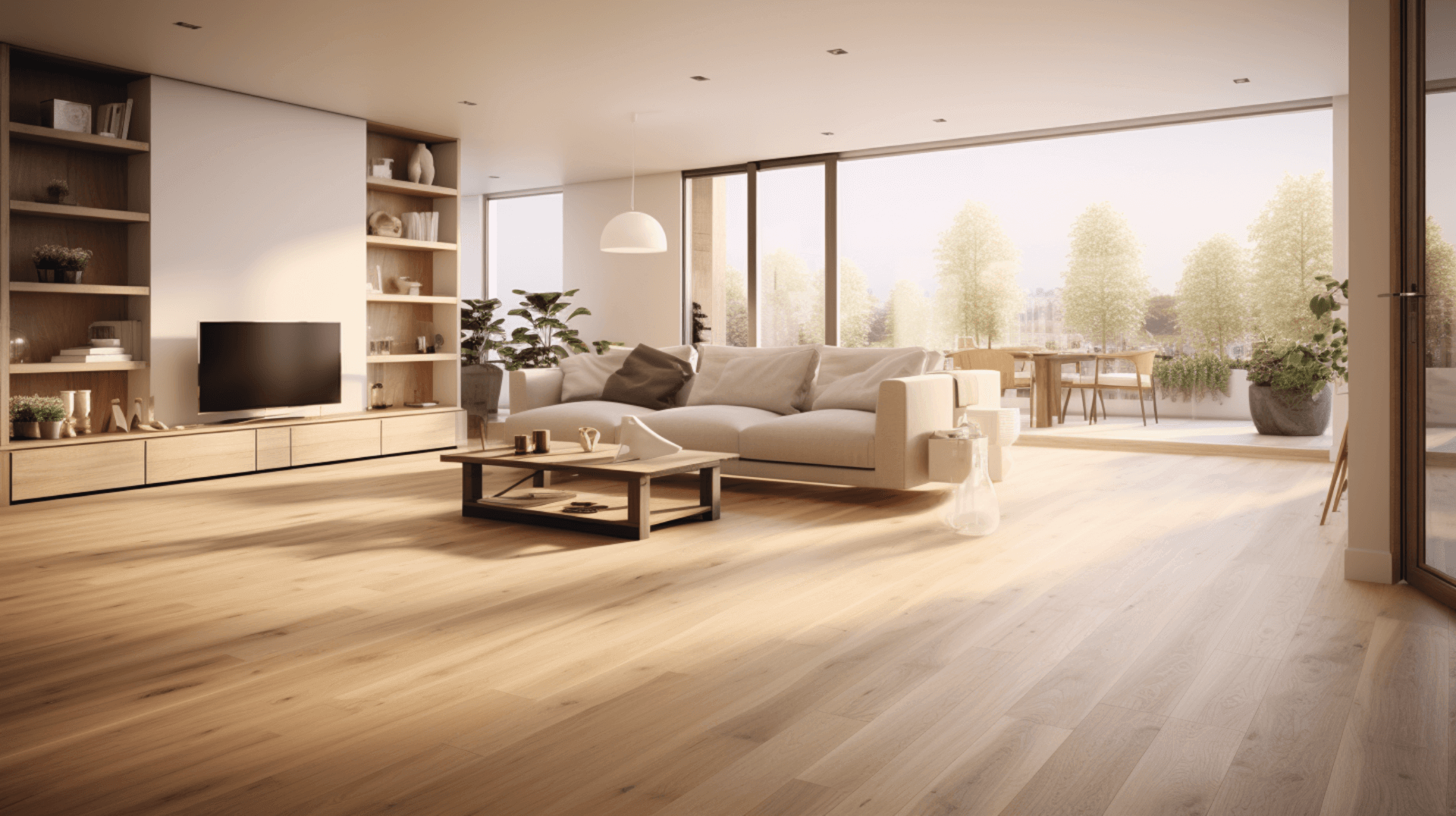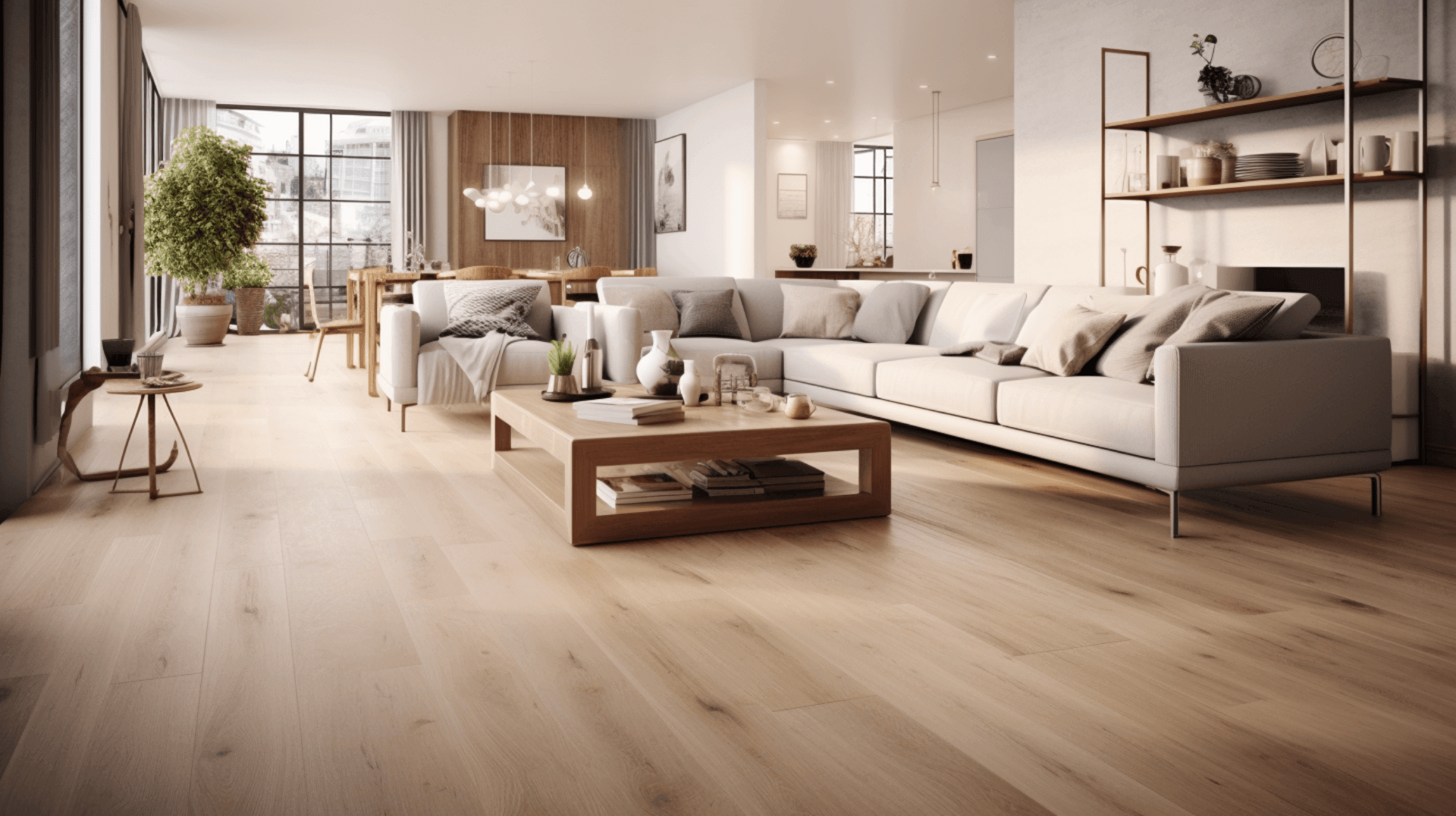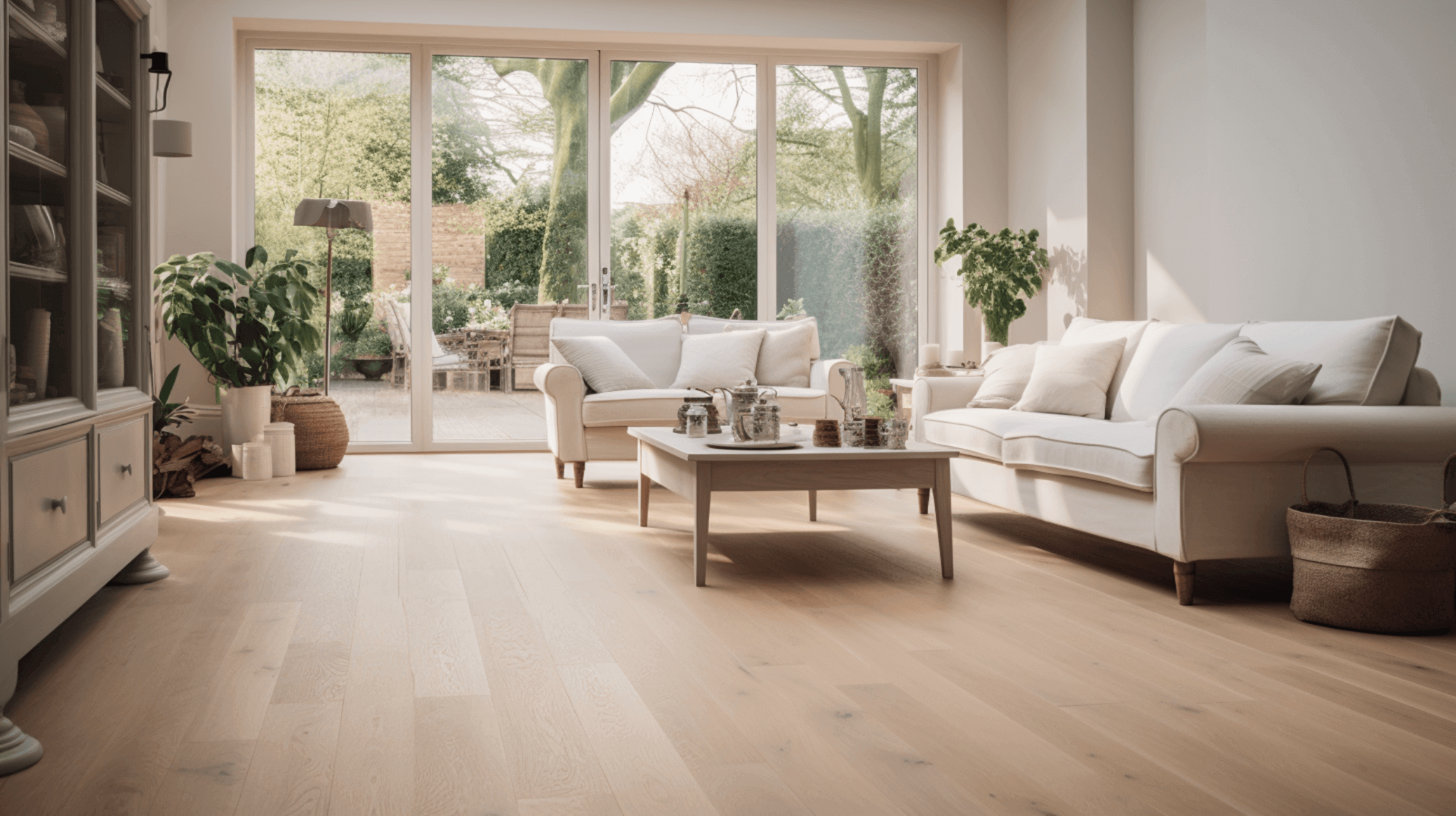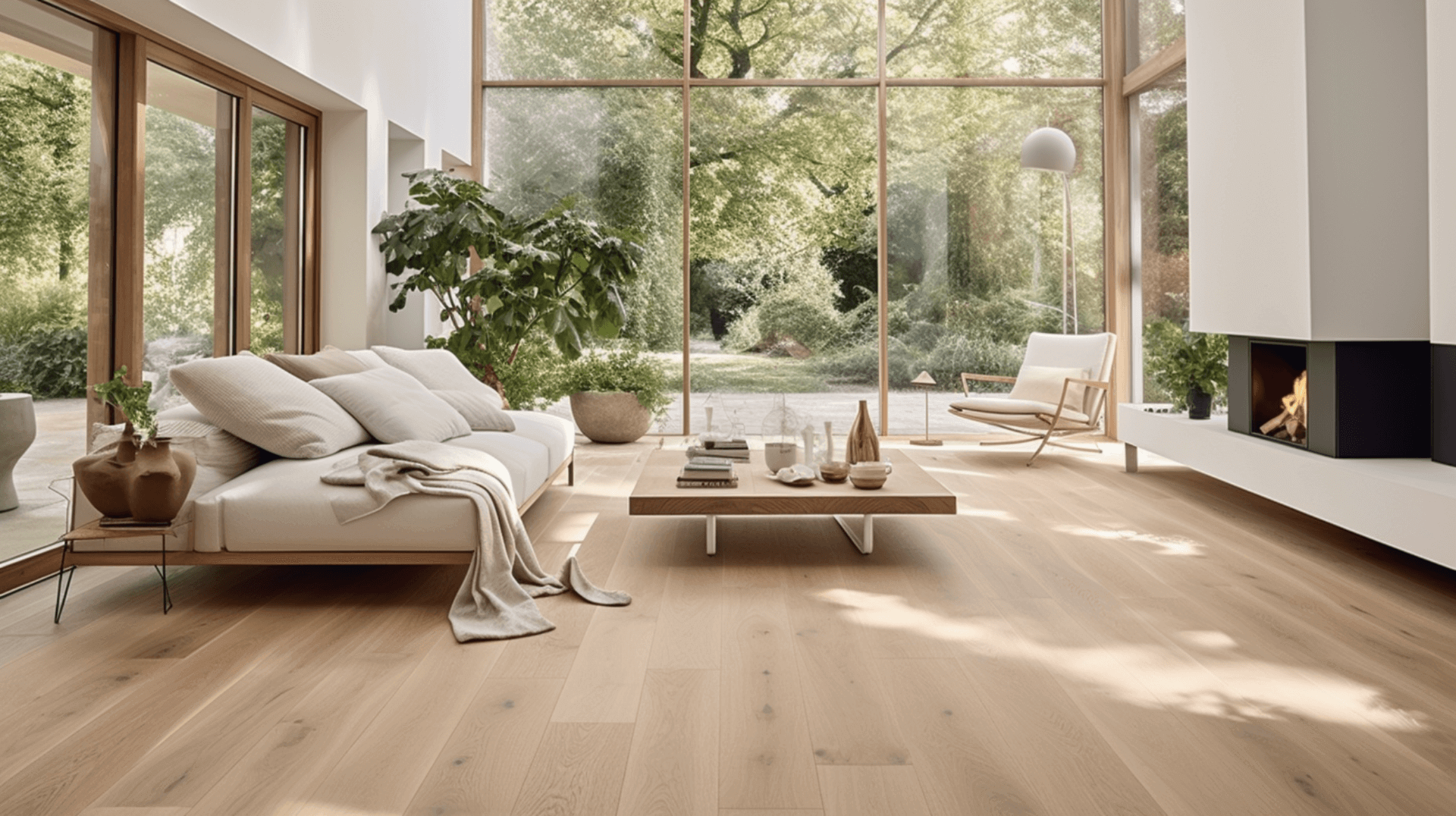Introduction to Creating a Peaceful Home Environment with Engineered Wood Flooring
Engineered wood flooring is a great choice for creating a peaceful home environment. It is a type of flooring that is made up of multiple layers of wood, with the top layer being a hardwood veneer. This type of flooring is more durable and stable than solid wood flooring, making it ideal for high-traffic areas. It is also more resistant to moisture and temperature changes, making it a great choice for areas with fluctuating temperatures.
Engineered wood flooring can contribute to a peaceful home environment in several ways. First, it is much quieter than other types of flooring, such as laminate or vinyl. This is because the multiple layers of wood absorb sound, reducing the amount of noise that is transmitted through the floor. This makes it ideal for homes with children or pets, as it will help to reduce the amount of noise that is created.
In addition, engineered wood flooring is also much easier to maintain than other types of flooring. It is resistant to scratches and dents, and can be easily cleaned with a damp mop. This makes it a great choice for busy households, as it requires minimal maintenance.
Finally, engineered wood flooring is also a great choice for creating a peaceful environment because of its noise reduction properties. The multiple layers of wood act as a sound barrier, reducing the amount of noise that is transmitted through the floor. This can help to create a quieter and more peaceful atmosphere in the home.
Overall, engineered wood flooring is an excellent choice for creating a peaceful home environment. Its durability, ease of maintenance, and noise reduction properties make it a great option for homeowners and business owners looking to create a tranquil atmosphere.
The Science Behind Noise Reduction with Engineered Wood Flooring

Engineered wood flooring is an effective way to reduce noise in the home. The structure of the flooring is designed to absorb sound, making it quieter than other types of flooring. This is due to the multiple layers of wood that make up the flooring, which act as a sound barrier and absorb sound waves.
The acoustic properties of engineered wood flooring also contribute to noise reduction. The multiple layers of wood act as a sound absorber, reducing the amount of noise that is transmitted through the floor. This helps to create a quieter and more peaceful atmosphere in the home.
The structure of engineered wood flooring also plays a significant role in noise reduction. The multiple layers of wood act as a cushion, absorbing sound and preventing it from traveling through the floor. This helps to create a quieter environment by reducing the amount of noise that is transmitted.
In addition to its noise reduction capabilities, engineered wood flooring is also more durable and stable than other types of flooring. This makes it an excellent choice for busy households, as it can withstand heavy foot traffic and is less prone to damage.
Overall, engineered wood flooring is an ideal choice for creating a peaceful home environment. Its structure, acoustic properties, and durability make it an effective solution for reducing noise and maintaining a tranquil atmosphere in the home.
Comparing Engineered Wood Flooring with Other Flooring Options for Noise Reduction

Engineered wood flooring is an excellent choice for reducing noise in the home. It is more effective than other types of flooring, such as laminate or vinyl, in terms of noise reduction. This is due to the multiple layers of wood that make up the flooring, which act as a sound barrier and absorb sound waves.
The advantages of engineered wood flooring over other types of flooring for noise reduction are numerous. It is more durable and stable than other types of flooring, making it ideal for high-traffic areas. It is also more resistant to moisture and temperature changes, making it a great choice for areas with fluctuating temperatures. In addition, it is much quieter than other types of flooring, as the multiple layers of wood absorb sound, reducing the amount of noise that is transmitted through the floor.
When installing engineered wood flooring over a radiant heat system, it is important to take certain precautions. A supplemental humidity control system should be specified into any radiant heat wood flooring project, in order to properly support ambient airspace conditions between 30% – 50% RH. A class II vapor retarder should be placed over a wood subfloor and below the wood floor to prevent moisture-related issues.
Overall, engineered wood flooring is an effective solution for reducing noise and maintaining a peaceful home environment. Its structure, acoustic properties, and durability make it an excellent choice for homeowners and business owners looking to create a tranquil atmosphere.
Exploring the Different Types of Engineered Wood Flooring for Noise Reduction

Engineered wood flooring is available in different types, including multi-ply, three-ply, and single-ply. These variations in construction contribute to the overall performance and noise reduction capabilities of the flooring.
Multi-ply engineered wood flooring, with its multiple layers of wood and a hardwood veneer top layer, offers enhanced durability and stability. This makes it an excellent choice for high-traffic areas where noise reduction is desired. The multiple layers of wood act as a sound barrier, absorbing sound waves and reducing noise transmission through the floor.
Three-ply engineered wood flooring, consisting of three layers of wood with a hardwood veneer top layer, provides increased resistance to moisture and temperature changes. This makes it suitable for areas with fluctuating temperatures, while still offering noise reduction benefits.
Single-ply engineered wood flooring, with its single layer of wood and a hardwood veneer top layer, offers specific advantages such as increased resistance to scratches and dents. While it may not provide the same level of noise reduction as multi-ply or three-ply options, it still contributes to creating a peaceful home environment.
The durability and stability of engineered wood flooring, regardless of the type, make it an excellent choice for noise reduction. The multiple layers of wood in multi-ply and three-ply options, as well as the resistance to scratches and dents in single-ply options, all contribute to reducing noise transmission and creating a tranquil atmosphere in the home.
The Role of Underlayment in Noise Reduction with Engineered Wood Flooring

Underlayment is a crucial component of engineered wood flooring installation. It provides several benefits, including sound absorption, noise reduction, cushioning, and protection against moisture and temperature changes.
One of the primary functions of underlayment is to absorb sound and reduce noise transmission. It acts as a buffer between the subfloor and the flooring, minimizing the impact noise caused by footsteps or other activities. This is particularly important for homeowners and business owners who want to create a quieter and more peaceful environment.
In addition to noise reduction, underlayment also provides cushioning for the flooring. It helps to absorb the impact of foot traffic, reducing wear and tear on the flooring and enhancing its durability. This is especially beneficial in high-traffic areas where the flooring is subjected to constant use.
Furthermore, underlayment plays a vital role in protecting the engineered wood flooring from moisture and temperature changes. It acts as a barrier, preventing moisture from seeping into the flooring and causing damage such as warping or buckling. It also helps to insulate the flooring, reducing heat loss and maintaining a comfortable temperature in the space.
When selecting underlayment for engineered wood flooring, it is essential to consider the specific needs of the flooring and the environment in which it will be installed. For areas with high levels of moisture, a moisture-resistant underlayment is recommended. In areas with fluctuating temperatures, cork underlayment is a suitable choice. It is also important to ensure that the new insulation does not block any ventilation openings like air bricks.
If you are the homeowner, it is your responsibility to ensure that any changes to your home, including adding extra insulation to your existing floor, comply with Building Regulations. It is important to leave room for expansion and consider any other key issues that may arise during the installation process.
Overall, underlayment is a critical component of engineered wood flooring installation, providing benefits such as sound absorption, noise reduction, cushioning, and protection against moisture and temperature changes. By choosing the appropriate underlayment and considering the specific needs of the flooring and environment, homeowners and business owners can enhance the performance and longevity of their engineered wood flooring.
Preparing Your Home for Engineered Wood Flooring Installation

Preparing your home for engineered wood flooring installation is an important step in ensuring the effectiveness of noise reduction. Proper preparation will help to ensure that the flooring is installed correctly and that the noise reduction benefits are maximized.
The first step in preparing your home for engineered wood flooring installation is to assess the existing flooring and subfloor. If the existing flooring is in poor condition, it should be removed and the subfloor should be inspected for any damage or irregularities. Any damaged or uneven areas should be repaired before the new flooring is installed.
Next, it is crucial to clean the subfloor thoroughly to remove any dirt, dust, or debris. This ensures that the new flooring can be properly adhered to the subfloor, creating a solid foundation for noise reduction. Additionally, leaving room for expansion around the edges of each room is important to accommodate any potential movement of the flooring.
Once the subfloor is clean and free of debris, it is time to install the appropriate underlayment. Underlayment plays a vital role in noise reduction by providing sound absorption and cushioning. It also offers protection against moisture and temperature changes, ensuring the longevity of the flooring. It is essential to select the right underlayment based on the specific needs of the floor and the environment it will be installed in. Consider factors such as moisture levels and temperature fluctuations when choosing the underlayment.
By following these steps and properly preparing your home for engineered wood flooring installation, you can ensure that the flooring is installed correctly and maximize the noise reduction benefits.
The Installation Process of Engineered Wood Flooring for Noise Reduction

The installation process of engineered wood flooring plays a crucial role in its noise reduction properties. The method and materials used during installation can impact the sound absorption and cushioning capabilities of the flooring. For instance, glue-down or nail-down methods tend to offer better sound absorption compared to floating floors. Additionally, the stability of the flooring is influenced by the installation process, which is essential for effective noise reduction.
To ensure optimal noise reduction, it is important to prepare the subfloor by thoroughly cleaning it and removing any debris. This creates a clean and smooth surface for the flooring installation. Leaving room for expansion around the edges of the room is also crucial to accommodate any potential movement of the flooring.
During the installation process, it is advisable to follow the manufacturer’s guidelines and recommendations to achieve the best results. This includes using the appropriate underlayment for sound absorption and cushioning. By selecting the right installation method, materials, and following proper techniques, homeowners and business owners can maximize the noise reduction benefits of engineered wood flooring.
Furthermore, it is important to consider Building Regulations and Building Suit requirements when installing engineered wood flooring for noise reduction. Compliance with these regulations ensures that the installation meets the necessary standards and contributes to a safe and sound environment.
Maintaining Your Engineered Wood Flooring for Optimal Noise Reduction

Regular cleaning and maintenance are crucial for maintaining the optimal noise reduction properties of your engineered wood flooring. Here are some additional tips to ensure the longevity and effectiveness of your flooring:
- Vacuum or sweep the floor regularly to remove dirt and debris that can cause scratches and damage. Use a soft-bristle brush attachment or a broom with soft bristles to avoid scratching the surface.
- When cleaning your engineered wood flooring, use a mild detergent or a specially formulated wood floor cleaner. Avoid using harsh chemicals or abrasive cleaning products, as they can damage the flooring. Follow the manufacturer’s instructions for cleaning and dilution ratios.
- Instead of using a wet mop, use a damp mop or cloth to clean the floor. Excess water can seep into the seams and cause swelling or warping of the flooring. Wring out the mop or cloth thoroughly to remove excess moisture.
- Protect the flooring from furniture and other objects by placing felt pads or protective materials on the feet of furniture. This prevents scratches and dents when moving or rearranging furniture.
- Consider using area rugs or mats in high-traffic areas to reduce wear and tear on the flooring. These can also help absorb sound and further enhance noise reduction.
By following these maintenance practices and considering the additional tips provided, you can ensure that your engineered wood flooring remains in optimal condition for noise reduction and longevity. Remember to also comply with Building Regulations and Building Suit requirements to ensure a safe and sound environment.
Repairing and Refinishing Your Engineered Wood Flooring with GJP Floor Sanding

GJP Floor Sanding is a professional floor sanding and refinishing service that can help repair and refinish your engineered wood flooring. Refinishing your engineered wood flooring can help restore its original beauty and extend its lifespan. It can also help improve the noise reduction properties of the flooring by providing a smoother surface that absorbs sound better.
The process of refinishing engineered wood flooring with GJP Floor Sanding involves several steps. First, the floor is inspected and any damaged or uneven areas are repaired. Next, the floor is sanded to remove any scratches or imperfections. This is followed by the application of a sealant to protect the floor from moisture and wear. Finally, the floor is buffed and polished to restore its original shine.
GJP Floor Sanding also offers a range of additional services such as staining, waxing, and oiling. These services can help enhance the look and feel of your engineered wood flooring and further improve its noise reduction properties. Additionally, GJP Floor Sanding ensures that all materials used are certified and conform to Building Regulations and Building Suit requirements. This helps to ensure that the installation meets the necessary standards and contributes to a safe and sound environment.
The Environmental Benefits of Choosing Engineered Wood Flooring

Engineered wood flooring is an environmentally friendly choice for homeowners and business owners looking to reduce their carbon footprint. It is made from a combination of wood and other materials, such as plywood, which helps to reduce the amount of wood used in the manufacturing process. This helps to conserve natural resources and reduce deforestation.
Engineered wood flooring is also a sustainable choice as it is designed to last for many years. This means that it does not need to be replaced as often as other flooring materials, which helps to reduce waste. Additionally, engineered wood flooring is easy to maintain and repair, which further contributes to its sustainability.
Furthermore, engineered wood flooring offers additional environmental benefits. Its thermal insulation properties help to reduce energy consumption by keeping the home or business warm in the winter and cool in the summer. This reduces the reliance on heating and cooling systems, leading to lower energy bills and decreased carbon emissions. Additionally, the installation process of engineered wood flooring is relatively quick and straightforward, requiring minimal additional works such as repair of defects or additional ventilation. This helps to reduce both the time and cost associated with installation, making it a more efficient and environmentally friendly choice.
Overall, choosing engineered wood flooring not only contributes to a greener future by conserving natural resources and reducing waste but also offers energy-saving benefits and efficient installation processes.
Expert Advice on Creating a Peaceful Home Environment with Engineered Wood Flooring

Engineered wood flooring is an excellent choice for creating a peaceful home environment. Its noise reduction properties help to reduce the sound of footsteps and other noises, creating a more tranquil atmosphere. Here are some expert tips on maximizing the noise reduction properties of engineered wood flooring:
- Choose a thicker engineered wood flooring with a higher density core. This will help to absorb more sound and reduce noise levels.
- Install the flooring on a well-insulated subfloor with a high sound transmission class rating. This will further reduce noise levels.
- Use area rugs or mats in high-traffic areas to reduce wear and tear on the flooring and enhance noise reduction.
- Regularly clean and maintain the flooring to ensure it remains in optimal condition for noise reduction.
- Consider refinishing the flooring with GJP Floor Sanding to restore its original shine and further improve its noise reduction properties.
Additionally, when assessing the suitability of a suspended timber floor for insulation, ensure that the floor is not located above a heated space and that it is not covered by concrete or similar materials. Also, check for evidence of ventilation to maintain a healthy environment.
By following these expert tips and considering the additional context provided, you can maximize the noise reduction properties of your engineered wood flooring and create a more peaceful home environment.
Contact GJP Floor Sanding for Your Engineered Wood Flooring Needs

GJP Floor Sanding is the perfect choice for homeowners and business owners looking to create a peaceful home environment with engineered wood flooring. We offer a range of services related to engineered wood flooring, including installation, repair, refinishing, staining, waxing, and oiling.
GJP Floor Sanding can help you maximize the noise reduction properties of your engineered wood flooring by providing a thicker flooring with a higher density core, installing it on a well-insulated subfloor, and using area rugs or mats in high-traffic areas. We can also refinish the flooring to restore its original shine and further improve its noise reduction properties. Additionally, GJP Floor Sanding can provide guidance on how to insulate suitable floors to achieve high levels of efficiency in your home. We can advise on the range of materials available on the market that are appropriately certified for use as insulation under timber floors, such as stone wool, sheep’s wool, wood fiber, glass wool, polyurethane (PUR), and polyisocyanurate (PIR). All materials used by GJP Floor Sanding are certified and conform to Building Regulations and Building Suit requirements, ensuring a safe and sound environment.
By choosing GJP Floor Sanding for your engineered wood flooring needs, you can create a peaceful home environment with enhanced noise reduction properties. Our professional services and expertise in engineered wood flooring, as well as insulation, will ensure that you get the most out of your flooring investment. Contact GJP Floor Sanding today to discuss your specific needs and create a tranquil space in your home or business.
